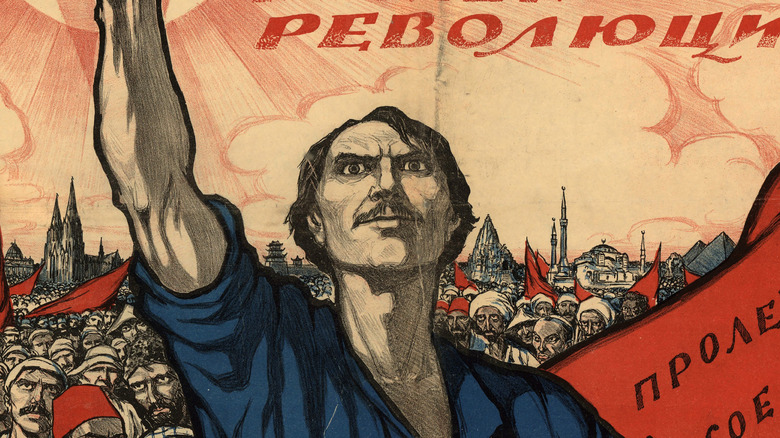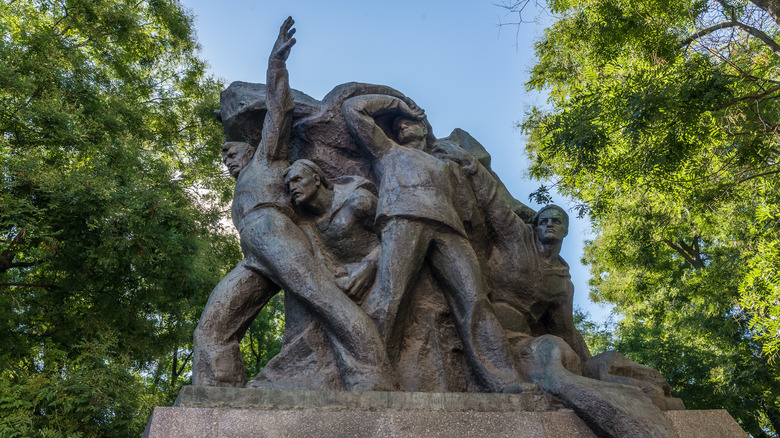The Deadly Mutiny Sparked By An Argument Over Food
Even the most roaring, dauntless, and unrelenting fires you've ever seen once started as a mere spark. Take a long look at history and its long roster of eternal feuds and you might get the idea. Did you know, for instance, that the legendary conflict between The Hatfields & The McCoys (1878) all started over someone stealing a pig? True story. For years, the two families clashed like rabid dogs in a pit, seething and foaming at the mouth over what some might have viewed as a simple misunderstanding or — at worst — a petty theft. Be it pride, territory, or the primordial urge to survive, there's always something that thickens bad blood beyond the point of reckoning.
Pigs were once a major asset to farmers in the American West. They were an excellent source of food and made for a good trading commodity, so if one was stolen from you, you stood to lose a lot of personal and financial security. Ergo, there was a reasonable degree of practicality behind the Hatfields vs. McCoys debacle. If there's one thing we can learn from it all, it's that food is a sensitive subject. Seriously, you don't mess with somebody's food. The commanding entities of the Russian battleship Potemkin were fatally reminded of this fact in 1905 after 700 crewmen overthrew the captain and the ship's overseers in retaliation for a rancid meal they were expected to eat lest they be met with extreme, ruthless consequences (per History).
Rotten food incited a maritime revolt
On June 14, 1905, the cooks on board the battleship Petomkin noticed a sickly crop of maggots devouring the meat meant for the crew's supper. They were told to prepare the meal anyway (boscht soup) and serve it to the fatigued, starving group of sailors aboard the vessel. However, it wasn't long before the men started complaining about maggots squirming around in their food, so a bold few took it upon themselves to approach the captain about it.
A small group of sailors, led by a man named Valenchuk, appeared before the captain and explained the problem at hand with some less than choice words. Commander Giliarovsky, the Petomkin's executive officer, shot Valenchuk dead for his insolence. Unfortunately for him, his extreme gesture of dominance wasn't met with the submission he'd hoped for. Valenchuk's compatriots overpowered Giliarovsky, tossed him over the side of the ship, and finished him off with a deadly hail of bullets (via History Today).
The rest of the crew, now led by fellow seaman Afanasy Matyushenko, staged a full-fledged revolt and killed a significant bulk of the officers on board, including the Petomkin's captain. The angry horde of sailors, who mere hours later were nearly forced to eat rancid meat under penalty of death, were now in command of the wartime vessel with no intention of turning it back over to the Russian military (per History).
The Petomkin's crew became martyrs
The Russian military scrambled to assemble a crew that would reclaim the rogue Petomkin, but seamen and soldiers across the board expressed support and sincere admiration for the renegade sailors and refused to attack them. In the eyes of their fellow man, Matyushenko and his warriors were venerable martyrs who represented something bigger, so for 11 days their voyage endured with vigorous support from their land bound countrymen (via History).
The Petomkin made a brief port in the city of Odessa, Ukraine to deliver the body of Valenchuk to sympathizers waiting at the docks. They set back out after their request for amnesty was denied. It wasn't until June 25 that they relinquished the vessel to authorities in Romania and surrendered, and the Petomkin was thereafter returned to the Russian military. Over a century later, the story of its infamous mutiny has been immortalized by historians and admirers alike (per History Today).


